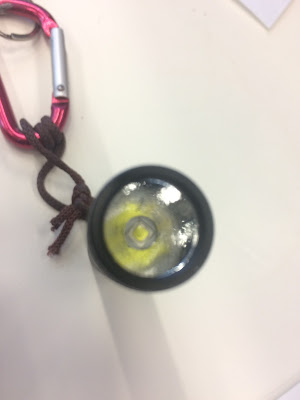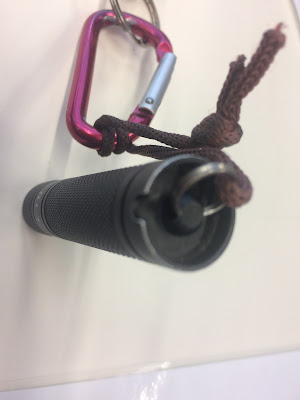
Here's a thing. How often do you find yourself in need of a tool for a quick fix? A loose screw, a non-twist bottle, a package to open. Often, the tool you need is buried in a drawer or lost in the tool shed, turning a 20 second job into 5-10 minutes. Or worse, you find yourself in a tricky tool situation away from home. Even the most efficient bug out bag or EDC can be a pain to rummage through. There's only so much you can load your cargo kilt up with before you get the jingle-shakes or worse, slippage. One solution to this is to combine multiple tools in to one lightweight system.
One such system is the Tactica M100 Talon. It certainly qualifies a "the tool you keep with you". It's lightweight, compact, versatile and might just be your new best prepping lifestyle friend. Whether it's mountain biking, snowboarding or just around the house, the Tactica Talon has got your back. Right there in your back pocket.
The Talon is designed and made in Melbourne. My home town so it was
especially exciting or me to back and support the Kickstarter for it.
So, here's what it is. Primarily a Hex bit driver, with a climbing
carbiner form factor. At its core a hardened stainless steel frame
wrapped in a pocket tech friendly lightweight composite material that
won't scratch your valuable iDevices as well as being 40% lighter than
titanium.

Inside the body of the composite component is a space for two 1/4" hex drivers retained by a removable silicone rubber slot-plug (Phillips + flat head included). The narrow-eye of the tool is cut to act as a multi-wrench with two versions being Imperial - 3/16, 1/4, 5/16, 3/8, 7/16, 1/2, 9/16in or the Metric - 5, 6.25, 8, 10, 11, 13, 14mm versions. Both versions have a 1/4" Hex socket built into the body as a heavy duty driver. The "mouth" of the storage slot is the primary hex driver, and is fitted with magnetic tool retainer in its side to assist with that.

The big end of the "wide-eye" of the carabiner is also fitted with a bottle opener. A raised notch on the "back" of the tool acts as a snag free, TSA safe Package Opener. ( ha, so they say. )
Inside the lip of the wrench holes are rulers, on either side, metric on one and imperial on the other. They are only small so you wont be checking fish-size or the like but perfect for sizing hardware like drill bits and bolts up. Beside the bottle opener in the "eye" is a hole drilled for a key chain split-ring. keeping it out of the way for using the wrench.

I don't think I'd use this at all as this isn't a tool I would put on a keychain, but it certainly could work for that. One thing I did like about its design is the view-port cut through the side which shows you if a hex- bit is inside. not quite big enough to see what kind of head, but certainly a sanity check to see if its one or two tools stored with a quick back and forth rattle check.
The slot-plug has two friction lugs to hold it in place but is fully removable, which makes the whole assembly easier to put together and reduces the chance of it tearing after repeated use but the fat that it could become detached and lost and the stored hexbits along with it is a small worry. The slot-plug is tight fitting and I have no such worry of it coming loose by accident.

My biggest gripe was the out-of-the-box realization that it shared the "form factor" of a Carabiner, it was in fact NOT set up to clip open. Few moving parts means simpler manufacturing and a stronger overall design.it would be convenient if it would auto-clip to bags, packs and pants, but it is narrow enough that it can be clipped to an existing carabiner and hung ready for use. Measuring in at 80mm x 40mm x 12mm (3.154"x1.57"x0.47") and weighing in at a slight 45g (1.6 oz).
Given its composite encapsulation and lack of any sharp or rough edges,
it makes an excellent pocket carry. Ready when you need it and not
wearing holes or scratching screens.
The angle of the primary hex driver lends itself to the Talon siting nicely in the palm of the hand though the short hex-bits can leave the access to whatever is being driven to be quite tight. It's certainly not a tool for hard and everyday use, get full sized driver for that. This is a tool for small jobs and "I just need to fix this one thing" jobs. It will however, put
together an Ikea Billy bookshelf up like no-ones business.

Go further and do more than single flat or a Phillips head will do but the great minds at Tactica came up with this; a12 Bit Toolpack giving you a great selection of hex bits to use. They have chosen a solid cross selection of bits that would cover most circumstances whether it's at home, work or on your next adventure. The Toolpack contains the following hex bits: Phillips #0, #1, #2 Flathead #3, #4, #5 Allen key sizes 3mm, 4mm, 5mm and most excitedly Torx T10, T15, T25. The full set weighs only 80g (2.8 oz) a small price to pay for the added utility of having the right head to hand.
The collection of bits are titanium coated (for longer wear protection) and ruggedly ground, for greater fortitude. Comparing the included bits with those of the
MiniInch tool pen systems and they are stubbier and more ruggedly produced than the grey MiniInch bits but otherwise fully compatible, other than being unable to store two in the Talon's internal storage due to length.
There have been reports that the box opener tool blunts after limited use, but given it is a spire of plastic, I'm neither surprised nor concerned. My only other gripe with it is the lack of an integral clipping mechanism as previously mentioned. And the wide turning circle of the main hex driver which is a bit tricky in tight spots.





















































